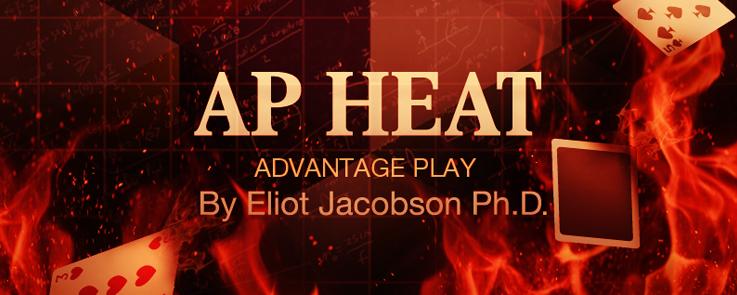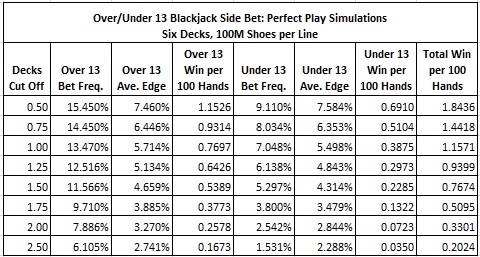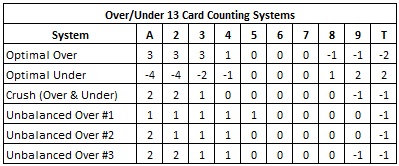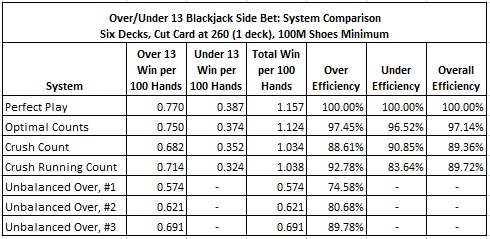Computer-Perfect Play against the Over/Under 13 Blackjack Side Bet

My dog told me I have gone off the deep end with this article and I don’t disagree: I decided to investigate computer-perfect play against the Over/Under 13 blackjack side bet (OU13). In other words, I assume an AP is using a computer program. As each card is dealt, the AP enters that card into his program. The program then computes the edge for both the Over 13 bet and Under 13. If the AP has an edge on one of these wagers, he makes that bet. Otherwise, the AP just sits on his hands. Perfect play gives an absolute upper bound on the win-rate that is possible against OU13 from card counting.
Computer-perfect play is possible against certain wagers in baccarat (e.g. the Pairs bet, see this post). This vulnerability arises because players can use a score card to keep track of the cards as they are played. In the case of blackjack, there were some early instances of players using computers before device laws were put in place. But, the law is now clear on using devices when playing blackjack. For example, from Nevada Senate Bill 467 (1985):
"It is unlawful for any person at a licensed gaming establishment to use, or possess with the intent to use, any device to assist in projecting the outcome of the game."
I also note the caveat that computer-perfect play is not necessarily optimal play. If the AP is shuffle tracking or knows in advance that a slug of cards is rich in high or low cards, he can do much better than computer-perfect play. So “perfect” must be qualified as bounding the win possible from card counting.
The following table gives the results from perfect play against OU13. Each line is based on a simulation of 100M six-deck shoes.

For example, with the cut card placed at 260 cards (1 deck cut off), the player will win 0.7697 units per 100 hands on the Over 13 bet and 0.3875 units per 100 hands on the Under 13 bet, for a total of 1.1571 units per 100 hands. No card counting system can exceed these numbers.
Next, I am going to compare the numbers for card counting OU13 to those for computer-perfect play. The following table gives the card counting systems discussed in previous posts (see this post and this post):

There is a system that I didn’t explicitly list in this table – the Crush count with a side count of 3’s (see this post). It has the same indices as the Crush count. I call this the “Crush Running Count.” It was suggested to me by an AP.
The following table summarizes the win rates for each of these card counting systems, along with perfect play:

The Optimal counts return over 97% of the win possible from perfect play. However, these are very challenging counts to use. In practical terms, the Crush Running Count is the strongest overall system to use against OU13. However, this system requires keeping a side count of 3’s. The ordinary Crush count or Unbalanced Over #3 are the best choices for the average AP.
What’s the point? Probably there is no point. A famous Zen koan asks, "What is time to a dog?" Here is a picture of my dog Rosie with her new Gumby toy:

Rosie with her Gumby toy, 04/28/2014


